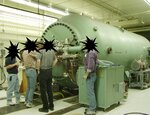Zak28
Advanced Member level 2

If ordinary 304 or 316 stainless steel was immersed in mineral or some other oil wouldn't its service life be substantially improved as opposed to operating in open atmospheric gasses were oxygen and heat would destroy it?
Oil immersion also carries heat away from the conductors and the oil is unlikely to become conductive after a long period of operation. This is for 3-8kvAC tesla spark gaps, Im not sure what higher voltages would do to the oil, very high voltages might even heat it to boiling temperature. Would be nice to have some publications about this.
Oil immersion also carries heat away from the conductors and the oil is unlikely to become conductive after a long period of operation. This is for 3-8kvAC tesla spark gaps, Im not sure what higher voltages would do to the oil, very high voltages might even heat it to boiling temperature. Would be nice to have some publications about this.




